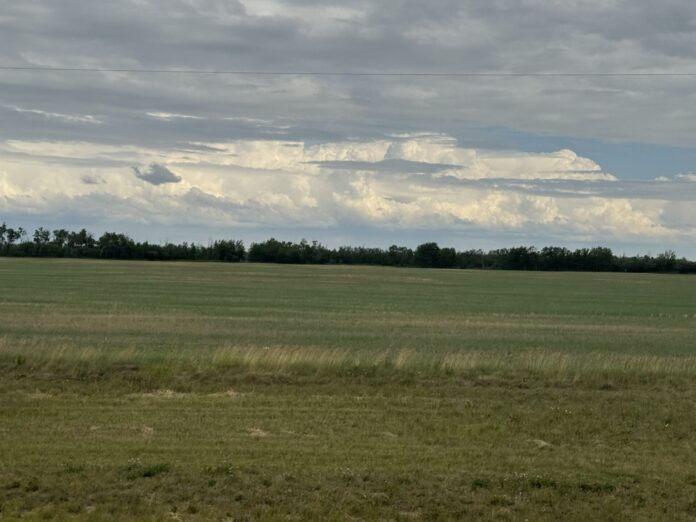Nearly a month and a half after declaring an agricultural disaster in the County of Grande Prairie, the situation has not improved.
County of Grande Prairie Reeve Bob Marshall says the situation the region is facing is dire. He explains a letter was sent off to Agriculture Minister RJ Sigurdson, but he has not spoken to the minister directly since.
“The whole point of this is to elevate the severity of this to the provincial government and also to our, hopefully, they will elevate it to the federal counterparts as well, because they’re the ones that will have any disaster relief programs,” Marshall says. “Since [we declared] Saddle Hills has declared an agricultural disaster, and I’ve talked to a few other of our neighbouring municipalities in the north part of the Peace, and they’re considering and getting close to declaring as well.”
He adds that the more municipalities declare a disaster, the more severe the situation. He hopes that with the current drought conditions, the higher levels of government will put something in place that could help mitigate what the producers are seeing. Marshall says the producers who are seeing the biggest impact are those with livestock.
“They’ve been through three to four years here where it’s been pretty dry, and the hay crops have been getting worse and worse every year. So, forage feed for our livestock is not in a good situation right now, especially in the northwest part of Alberta.”
Marshall explains the Kiskatinaw River wildfire added to the issue, as it impacted a lot of grazing leases for local livestock producers, and those impacted were trying to find a field elsewhere to lease to move their livestock to for feed. He hopes that with the amount of moisture southern Alberta is seeing, more forage becomes available down there.
“But, that just increases their costs and impacts their viability on being profitable and getting through.”
“I mean, one or two years is one thing, but when you have multiple years in a row, it starts to impact, and it opens the question of the viability of staying, or what do you do with your livestock? Do you sell it off? Do you sell off your herds? Those are a lot of the questions that some producers are looking at, and some are in a little better situation. They’re able to muster through, but again, they need some help, whatever that may be.”
While the region has seen some moisture in the past month, Marshall explains it is too late for most crops as they have been in the ground since May. He hopes that the governments will be able to implement some sort of program like they have in the past, whether it be crop insurance or something else.




